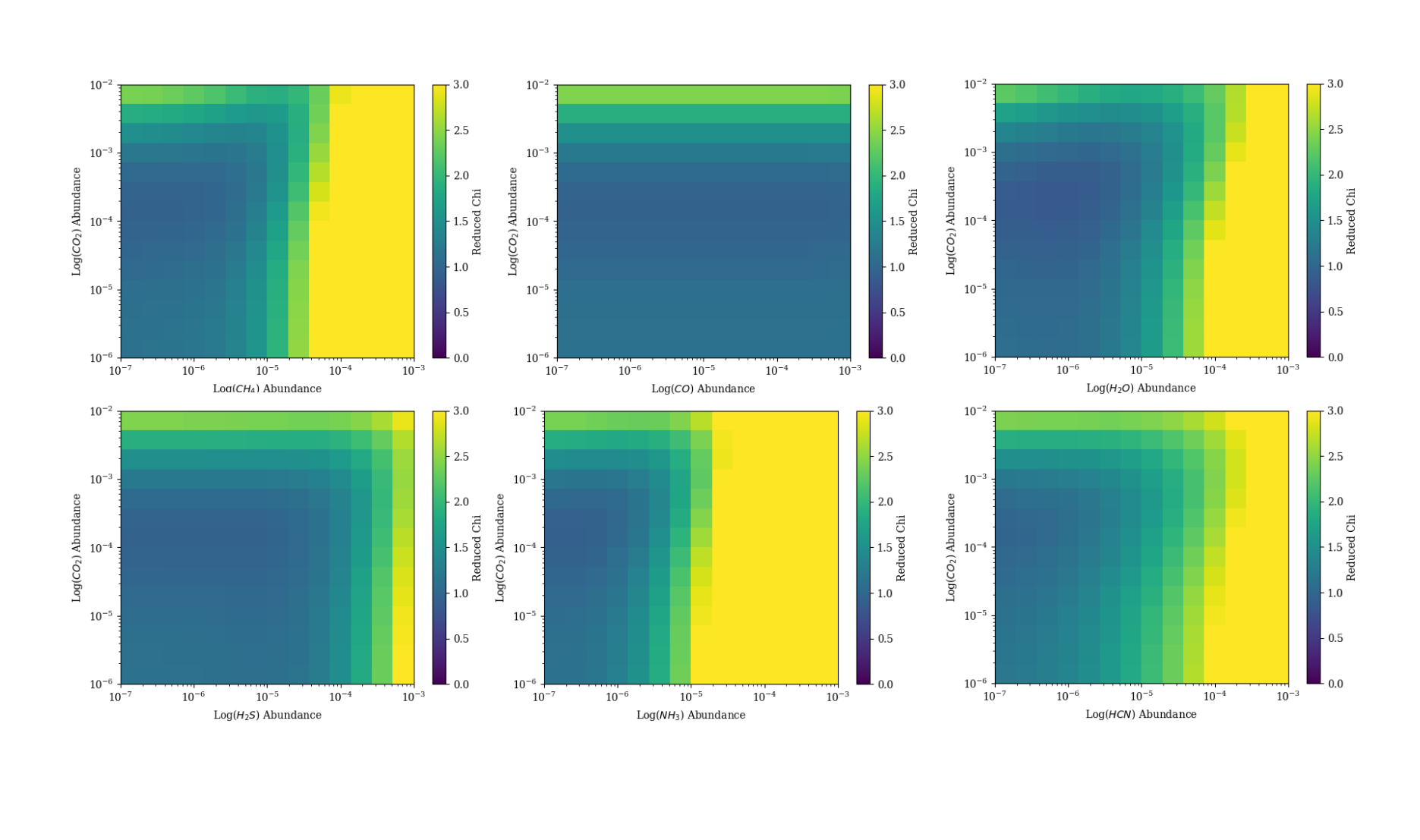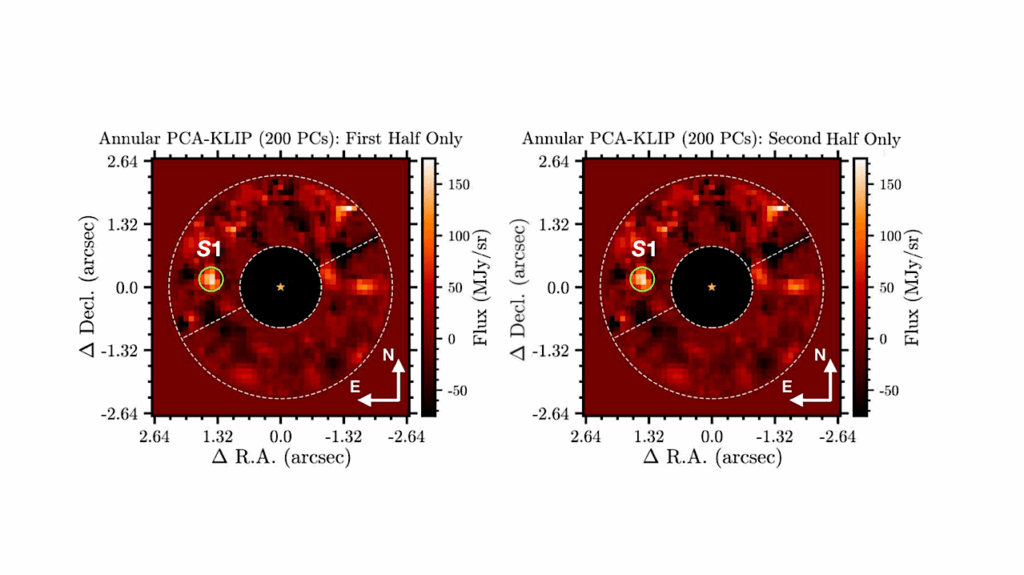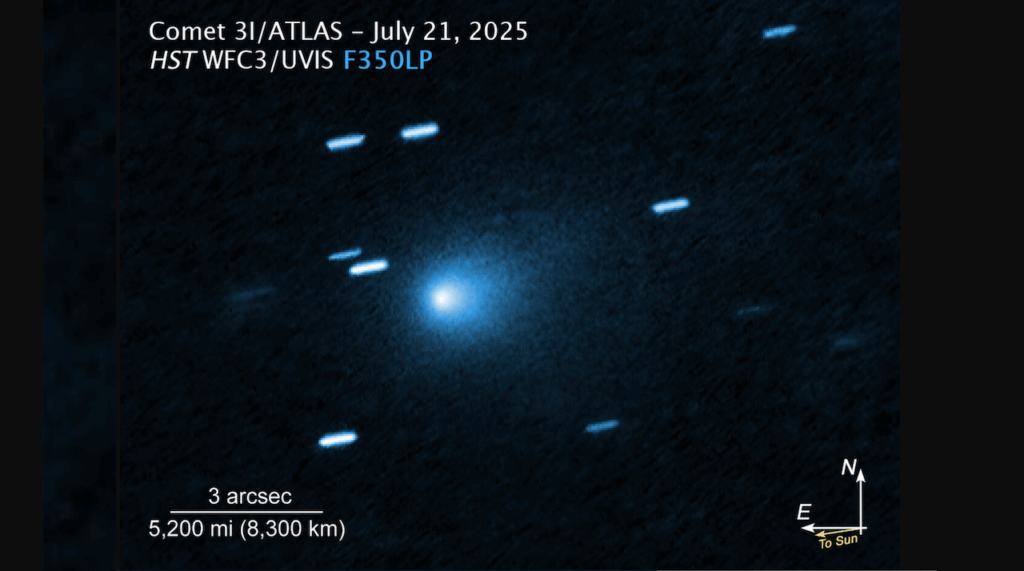The Transmission Spectrum Of The Potentially Rocky Planet L 98-59 c

We present observations of the 1.35+/-0.07 Earth-radius planet L 98-59 c using Wide Field Camera~3 on the Hubble Space Telescope. L 98-59 is a nearby (10.6 pc), bright (H=7.4 mag), M3V star that harbors three small, transiting planets.
As one of the closest known transiting multi-planet systems, L 98-59 offers one of the best opportunities to probe and compare the atmospheres of rocky planets that formed in the same stellar environment. We measured the transmission spectrum of L 98-59 c during a single transit, with the extracted spectrum showing marginal evidence for wavelength-dependent transit depth variations which would indicate the presence of an atmosphere.
Forward modeling was used to constrain possible atmospheric compositions of the planet based on the shape of the transmission spectrum. Although L 98-59 is a fairly quiet star, we have seen evidence for stellar activity, and therefore we cannot rule out a scenario where the source of the signal originates with inhomogeneities on the host-star surface. While intriguing, our results are inconclusive and additional data is needed to verify any atmospheric signal.
Fortunately, additional data will soon be collected from both HST and JWST. Should this result be confirmed with additional data, L 98-59 c would be the first planet smaller than 2 Earth-radii with a detected atmosphere, and among the first small planets with a known atmosphere to be studied in detail by the JWST.
Thomas Barclay, Kyle B. Sheppard, Natasha Latouf, Avi M. Mandell, Elisa V. Quintana, Emily A. Gilbert, Giuliano Liuzzi, Geronimo L. Villanueva, Giada Arney, Jonathan Brande, Knicole D. Colón, Giovanni Covone, Ian J.M. Crossfield, Mario Damiano, Shawn D. Domagal-Goldman, Thomas J. Fauchez, Stefano Fiscale, Francesco Gallo, Christina L. Hedges, Renyu Hu, Edwin S. Kite, Daniel Koll, Ravi K. Kopparapu, Veselin B. Kostov, Laura Kreidberg, Eric D. Lopez, James Mang, Caroline V. Morley, Fergal Mullally, Susan E. Mullally, Daria Pidhorodetska, Joshua E. Schlieder, Laura D. Vega, Allison Youngblood, Sebastian Zieba
Comments: Submitted to AAS Journals
Subjects: Earth and Planetary Astrophysics (astro-ph.EP)
Cite as: arXiv:2301.10866 [astro-ph.EP] (or arXiv:2301.10866v1 [astro-ph.EP] for this version)
Submission history
From: Thomas Barclay
[v1] Wed, 25 Jan 2023 23:21:37 UTC (11,535 KB)
https://arxiv.org/abs/2301.10866
Astrobiology








